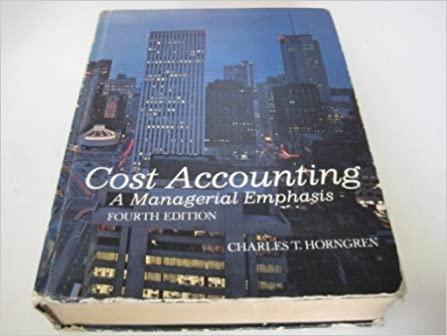Multiple Choice; Discovering Irregularities In questions 1 through 7, you are given a well-recognized procedure of internal
Question:
Multiple Choice; Discovering Irregularities In questions 1 through 7, you are given a well-recognized procedure of internal control. You are to identify the irregularity that will be discovered or prevented by each procedure. Write the numbers 1 through 7 on your answer sheet. Then place the letter of your chosen answer next to your numbers.
1. The general-ledger-control account and the subsidiary ledger of accounts receivable are reconciled monthly. The two bookkeepers are independent.
a. The accounts-receivable subsidiary-ledger bookkeeper charges a cus- tomer with $72 instead of $74, the correct amount. The error is due to misreading the sales slip. The credit-sales summary for the day has the correct amount of $74.
b. The accounts-receivable subsidiary-ledger bookkeeper charges a sale to Mr. Smith instead of Mr. Smithe (that is, the wrong customer). The error is due to misreading the sales slip.
c. The employee opening mail abstracts funds without making a record of their receipt. Customer accounts are not credited with their payments.
d. The general-ledger bookkeeper takes funds and covers the loss by charging “Miscellaneous General Expenses.”
e. When friends purchase merchandise, the salesclerk allows them an employee discount by using an employee name on the sales slip and deducting the discount on the slip. This is against company policy.
2. The voucher system requires that invoices be compared with receiving reports and express bills before a voucher is prepared and approved for payment.
a. Unrecorded checks appear in the bank statement.
b. The treasurer takes funds by preparing a fictitious voucher charging
“Miscellaneous General Expenses.”
c. An employee in the purchasing department sends through fictitious invoices and receives payment.
d. A cash shortage is covered by underfooting outstanding checks on the bank reconciliation.
e. A cash shortage is covered by omitting some of the outstanding checks from the bank reconciliation.
3. Both cash and credit customers are educated to expect a sales ticket. Tickets are serially numbered. All numbers are accounted for daily.
a. Customers complain that their monthly bills contain items that have been paid.
b. Some customers have the correct change for the merchandise purchased.
They pay and do not wait for a sales ticket.
c. Customers complain that they are billed for goods they did not purchase.
d. Customers complain that goods ordered are not received.
e. Salesclerks destroy duplicate sales tickets for the amount of cash stolen.
4. The storekeeper should sign a receipt for goods received from the receiving and inspection room, and no payment should be made without his signature.
a. Invoices are paid twice.
b. Employees send through fictitious invoices and receive payment.
c. Materials are withdrawn from the storeroom for personal use rather than for business purposes.
d. Employees send through purchase requisitions for materials for personal use. After the materials are received and receiving reports are issued, employees take the merchandise for personal use.
e. The storekeeper takes materials and charges them to company use.
5. At a movie theater box office, all tickets are prenumbered. At the end of each day, the beginning ticket number is subtracted from the ending number to give the number of tickets sold. Cash is counted and compared with the number of tickets sold.
. The box office gives too much change.
_ The ticket taker admits his friends without a ticket.
The manager gives theater passes for personal expenses. This is against company policy.
_ A test check of customers entering the theatre does not reconcile with ticket sales.
Tickets from a previous day are discovered in the ticket taker’s stub box despite the fact that tickets, are stamped “Good on Date of Purchase Only.”
. In Hutchinson Commons Cafeteria, the customers enter at an JN door and choose their meals. Before leaving the serving rail, they are billed by a biller for the food taken. After they eat, they present their bills and make payments to a cashier. At the end of the day, cash receipts are reconciled with billings.
a. A friend of the biller and the cashier moves through the lines and takes a free meal without being billed or paying.
b. A customer who has been billed goes out the JN entrance without paying.
Cc.
d.
c.
Meat is stolen by an employee.
The biller makes an error by billing an order at $1.15 instead of the correct amount, $1.35.
A customer sneaks under the serving rail, takes an extra cup of coffee, sneaks back under the rail, and returns to his table.
. The duties of cashier and accounts-receivable bookkeeper should be separated.
a. There are two cashiers. At the end of a certain day, there is a sizable cash shortage. Each cashier blames the other. It is impossible to fix responsibility.
. A cash shortage is covered by overfooting (overadding) cash in transit on the bank reconciliation.
A cash shortage is covered by charging it to “Miscellaneous General Expenses.”
. Customers who paid their accounts in cash complain that they still receive statements of balances due.
The accounts-receivable bookkeeper charges off the accounts of friends to “Allowance for Bad Debts.” lo1
Step by Step Answer:






